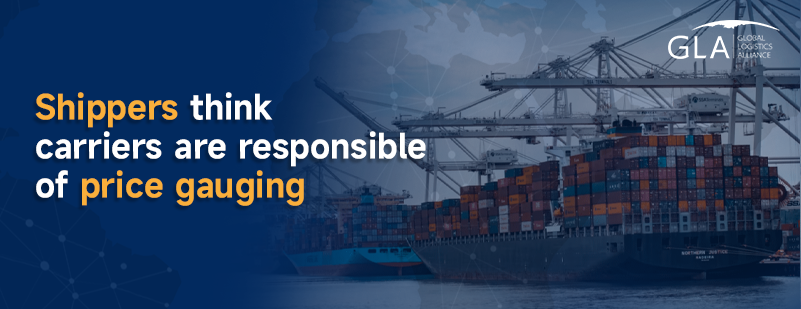Welcome to GLA! Leading the global logistics alliance.


Your location:Home > News > Shippers Accuse Carriers of Price Gouging Amid Red Sea Shipping Crisis
Time:2024-02-28 Publisher:Kevin Num:6677

As the Red Sea shipping crisis continues to roil global trade, shippers and forwarders are voicing growing concerns over what they perceive as significant price gauging by carriers operating on the Asia to Europe shipping routes. The surge in prices, they argue, is primarily driven by a slew of charges imposed by carriers, including peak season surcharges, heightened fuel costs, and security surcharges. These charges, exacerbated by the Red Sea shipping crisis, have left shippers grappling with unprecedented cost escalations.
Speaking on condition of anonymity, a forwarder disclosed that carriers quoted $1,400 per FEU (Forty-foot Equivalent Unit) in December, a figure that skyrocketed to $5,200 for 40ft containers and $4,000 for 20ft containers come January. Shockingly, projections hint at even steeper prices post-Chinese New Year, with fears looming of rates reaching an eye-watering $12,000 to $15,000 per FEU.
Amidst this pricing turmoil, uncertainty shrouds the application of these charges, with questions lingering over whether security surcharges will be enforced for vessels circumventing the Cape of Good Hope, or if additional fuel charges will persist for ships traversing the Suez Canal.
While December witnessed carriers honoring freight rates, Maersk's announcement on December 24 regarding the resumption of services through the Suez Canal with the deployment of Operation Prosperity Guardian (OPG) has sent ripples through the industry. OPG aims to safeguard maritime commerce in the Red Sea and Gulf of Aden, offering a glimmer of hope amidst the chaos.
Peter Sand, chief analyst at Xeneta, rebuffs claims of a capacity crunch, asserting that despite carriers rerouting ships around the Cape of Good Hope, the market boasts ample capacity. Sand underscores carriers' utilisation of various tactics to curtail capacity, including additional port calls, slow steaming, sailings cancellations, and leveraging the Cape route.
Nonetheless, fears persist regarding the impact of Red Sea attacks on vessel reroutings, potentially exacerbating rate hikes and capacity shortages. James Hookham, director of the Global Shippers’ Forum, urges caution, acknowledging potential delays for ships rerouted via southern Africa but cautioning against exaggerated peak season claims by carriers. He draws parallels to declining global trade and carriers operating vessels with low utilisation rates, akin to running underfilled train services.
As the industry grapples with the fallout from the Red Sea shipping crisis, shippers and forwarders brace for continued volatility, navigating through turbulent waters fraught with uncertainty and mounting costs. With the spectre of escalating prices looming large, the spotlight remains firmly fixed on carriers as stakeholders anxiously await a resolution to the crisis gripping maritime trade routes.
Prev:Welcome! New Golden Member from France ———— ALAINE OVERSEASNext:Welcome! New Golden Member from Poland ———— OMEGAir CARGO Sp. z o.o.
Recommended Membership
Latest News